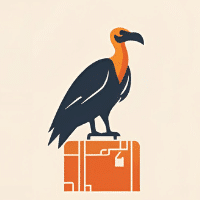It is no surprise that Italy is one of the top five most visited countries in the world. The food, history, architecture and nature make for an incredible combination. While going through the Italian citizenship process, I spent a lot of time traveling in Italy. Now, I’ll show you how to spend one amazing month in Italy.
You can’t possibly see all of the highlights during one month in Italy but you can knock off a bunch of bucket list items. While I wasn’t able to fit all of Italy’s 11 most underrated places on this list, there are still some gems.
It would be most convenient to start the itinerary in Naples, or Rome, and go south to North. While there are plenty of flights from the US to Rome, there are seasonal flights from Newark, New York-JFK, Philadelphia, Atlanta and Chicago to Naples.
While I left out places like Sicily, the Amalfi Coast and Puglia, which are well worth a visit, easy accessibility by train is a major factor while spending a month in Italy.
Also, consider visiting Italy in April, May, September or October for good weather and fewer crowds. August, in particular, can be infernally hot and crowded and I’d advise against going then.
One Month in Italy: Naples/Campania – 3 days
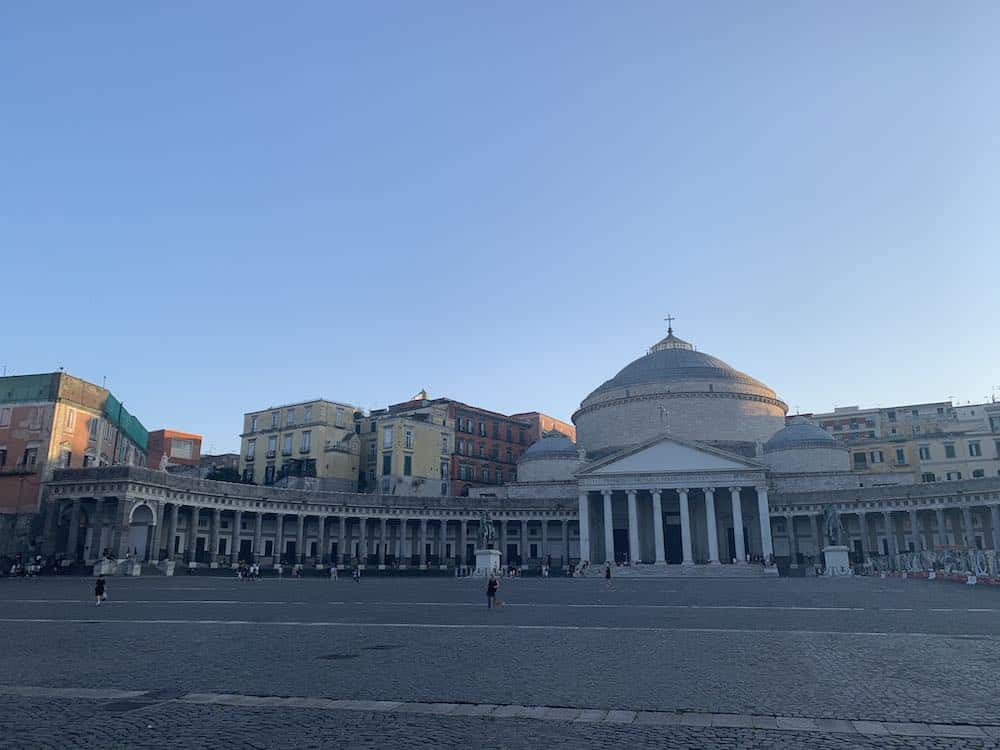
Naples is the pizza capital of the world and that’s reason enough to visit the Southern Italian city during one month in Italy. While it gets a bad rap for being dirty, I can appreciate how gritty and beautiful Naples is at the same time.
Its location on the Gulf of Naples is incredible and you can see Mount Vesuvius from plenty of points in the city. Plenty of people skip over Naples to head right to the Amalfi Coast but that would be a mistake.
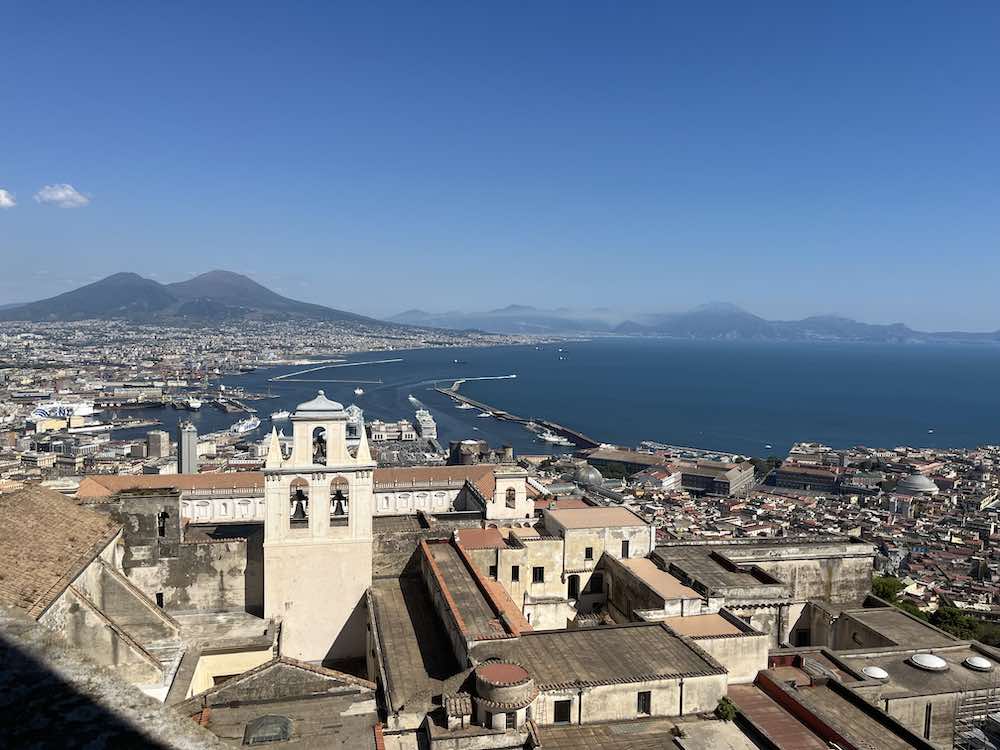
Walking along the water is a must, along with heading to the Castel Sant’Elmo and Piazza del Plebiscito. You can see the city’s highlights in a day and use it as a base for other destinations in the Campania region.
I’d recommend spending at least three days in the area so you have enough time to see Naples and take trips to an island, like Ischia or Capri and visit an archaeological site like Herculaneum, Pompeii or Paestum. You can also hike up Mount Vesuvius and visit Herculaneum on the same day.
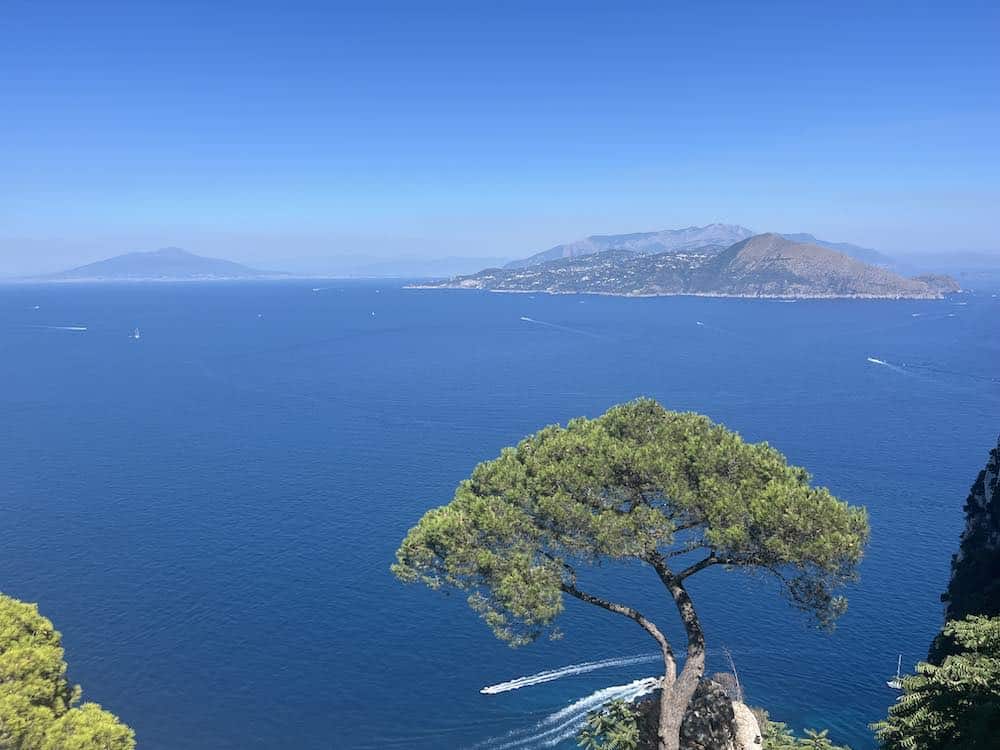
I’ve yet to have a pizza I didn’t like in Naples and some of the best include Gino e Toto Sorbillo, L’Antica Pizzeria da Michele and A Ogge a 8.
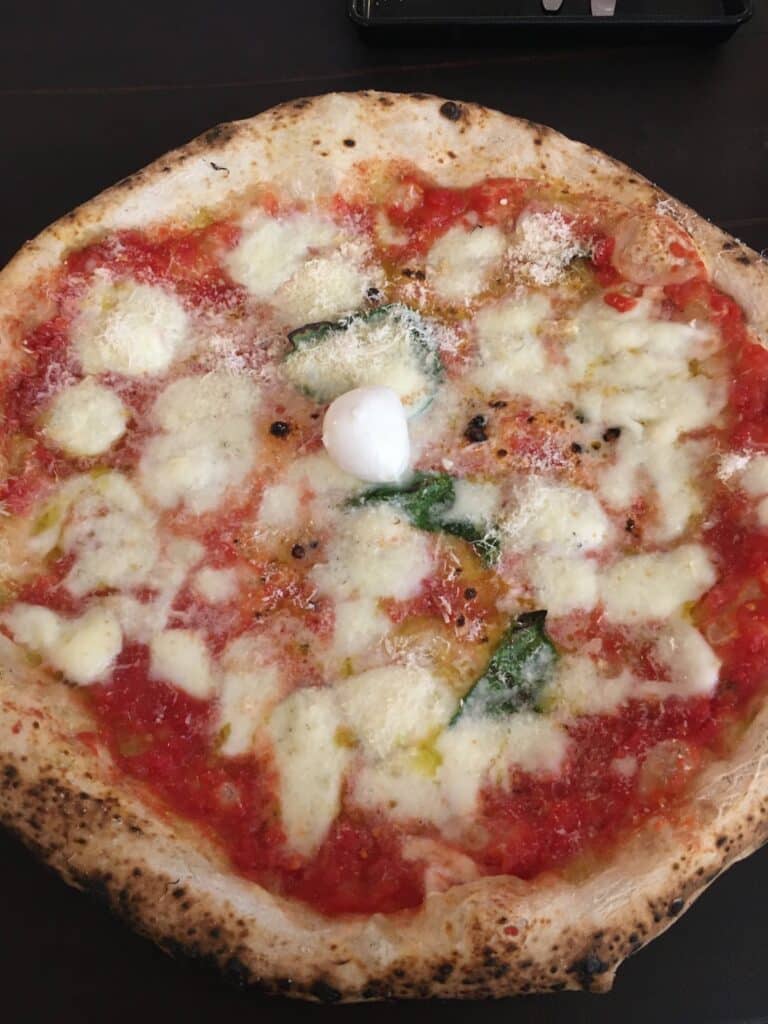
One Month in Italy: Rome – 5 days
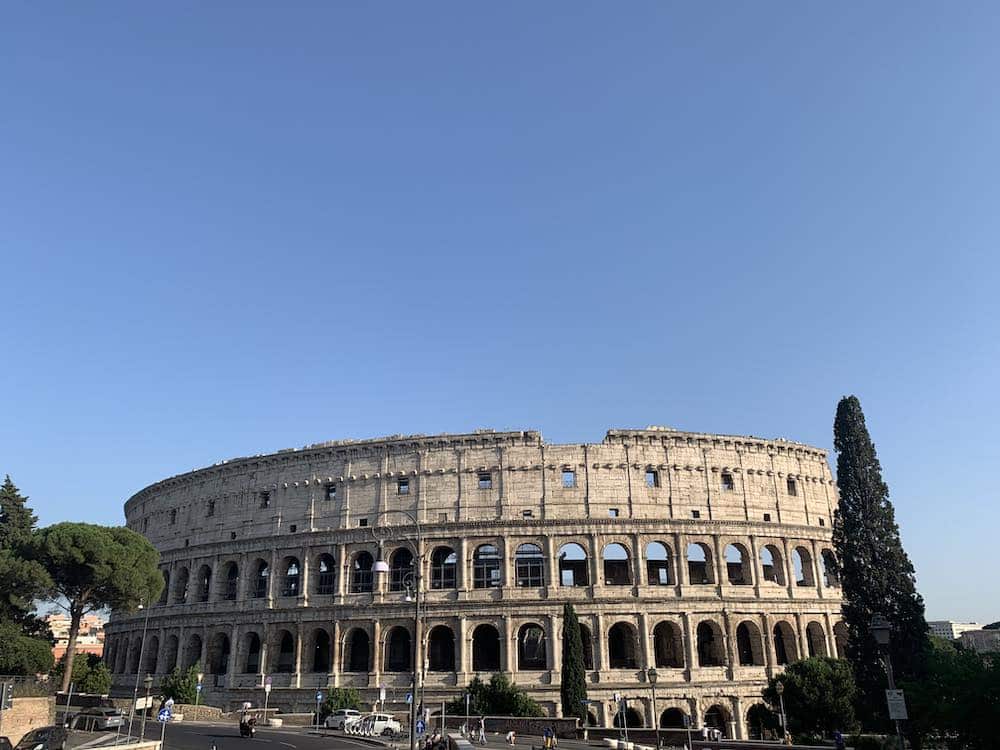
If you can only visit one city in Italy, make it Rome. Italy’s biggest city is a living museum that was the center of the Roman empire for centuries. You could probably spend a month in Italy just checking out all of the monuments, art and churches in Rome without getting bored.
From Naples, there are plenty of daily train departures to Rome. A more expensive high speed train takes 1 hour and ten minutes, while intercity trains are around two hours and regional ones are closer to three. Choose whichever one suits your budget on TrenItalia.
With just a month in Italy, five days in Rome is a good compromise. That gives you enough time to check out the major tourist sites like the Colosseum, Vatican, Roman Forum and Pantheon and more at a pace that isn’t too rushed.
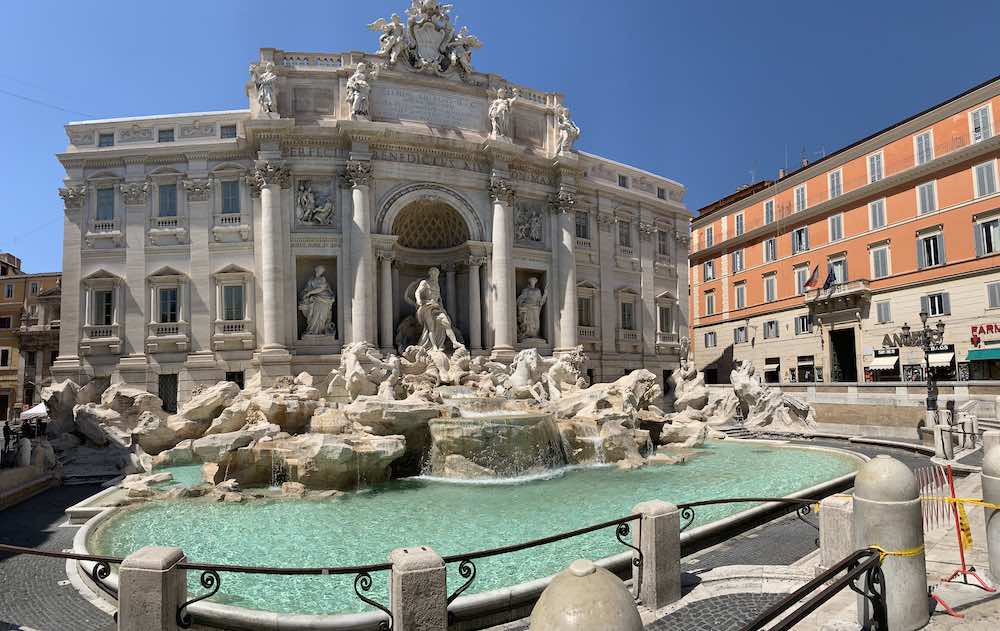
With five days, you could also venture into the trendy Trastevere neighborhood, head to the Borghese Gallery and check out fascist architecture at the Palazzo della Civita Italiana.
Of course, you also have to head to the Trevi Fountain, Spanish Steps and Piazza Navona but they’re all centrally located.
Roman cuisine also has its own must try dishes like cacio e pepe, bucatini all’amatriciana, carbonara, pinsa (Roman pizza) and carciofi alla giudia (Jewish artichokes). I like Pinsere for Roman style pizza and Da Edy, near Piazza del Popolo, for Roman dishes.
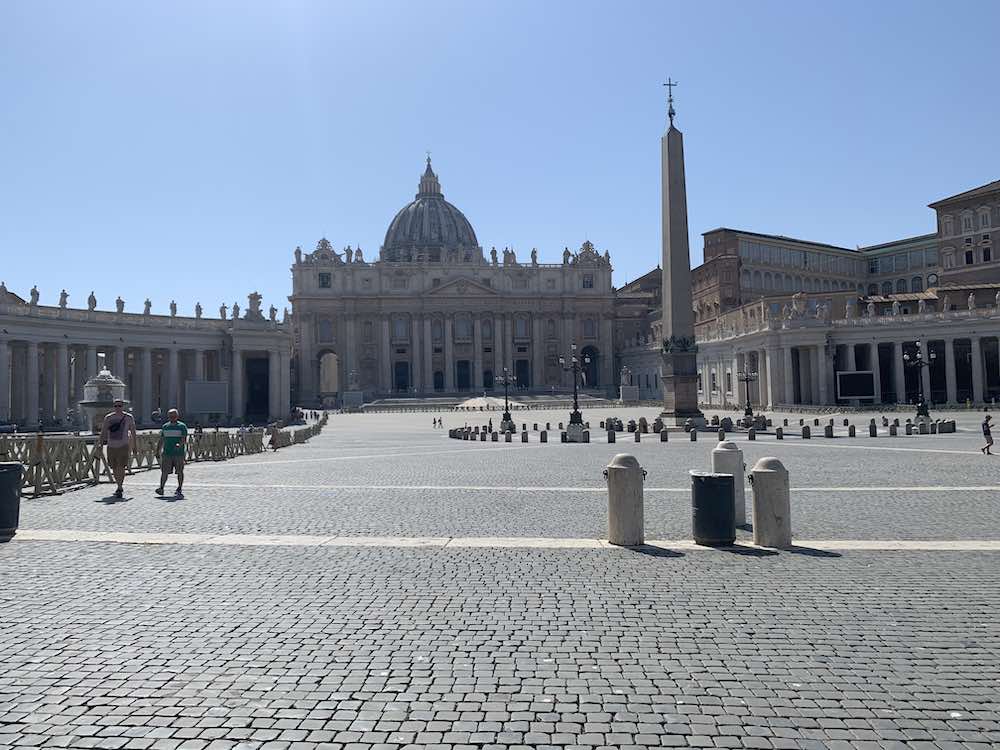
Umbria – 2 days

While not completely essential during one month in Italy, consider making a quick stop in the small town of Assisi after Rome. It is around two hours away from Rome by train.
Assisi is a perfect place to spend a day and a popular pilgrimage site. The Basilica of Saint Francis is iconic and one of the most famous churches in the whole country.
After checking out the incredible Basilica, wander into town and make stops at the Piazza del Comune and Basilica di Santa Chiara. You can also go further up the hill to Rocca Maggiore, which is a massive medieval fortress with views of the town.
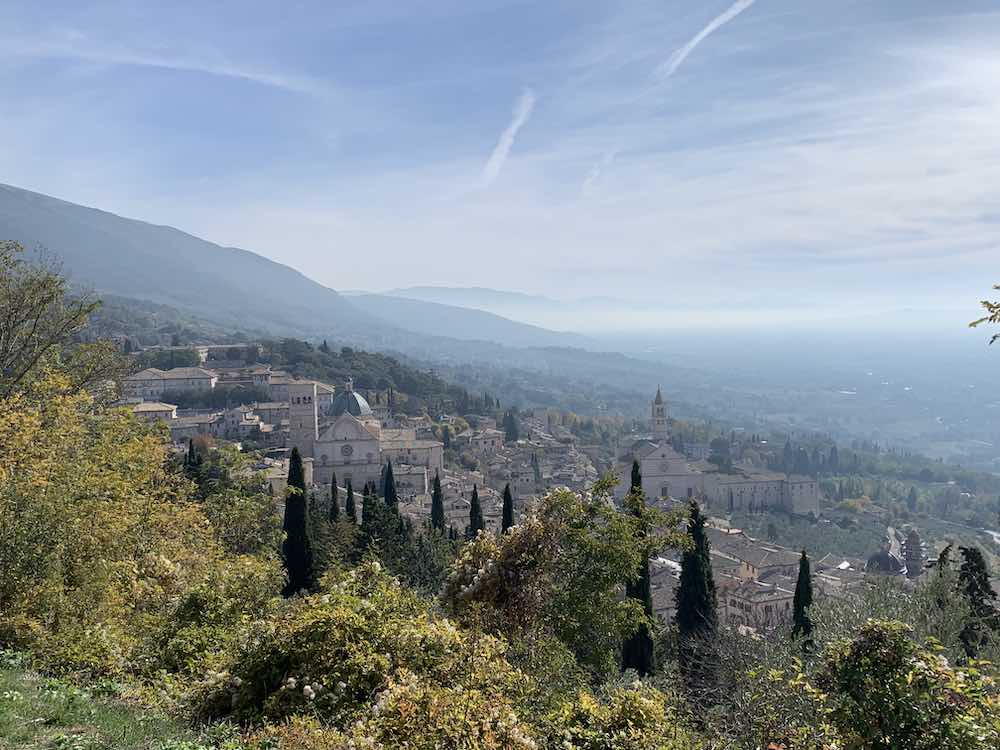
After spending a day in Assisi, take a short 25 minute train ride to Perugia. Perugia is the capital of Italy’s Umbria region, right in the middle of the country. It’s a university town that is one of Italy’s most typical medieval cities.
Before seeing the city, check out the underground city of Rocca Paolina, a former Renaissance fortress. You can also see a great view of the valley and Perugia from the nearby Carlucci Gardens.
Perugia’s central plaza, Piazza IV Novembre, and the surrounding buildings, are both gorgeous and imposing. While you’re in the center of the city, check out the Cathedral of San Lorenzo and the Etruscan Arch. The ancient Etruscans built the latter over 2200 years ago.
You can see a panoramic view of the city by walking up the stairs to Porta Sole. A couple of other cool things to do in Perugia are walking along the Medieval Aqueduct and going to the Chiesa di San Michele Arcangelo. It has a unique circular shape and it feels ancient inside.
Torta al testo, a flat foccacia sandwich, is popular in Perugia.
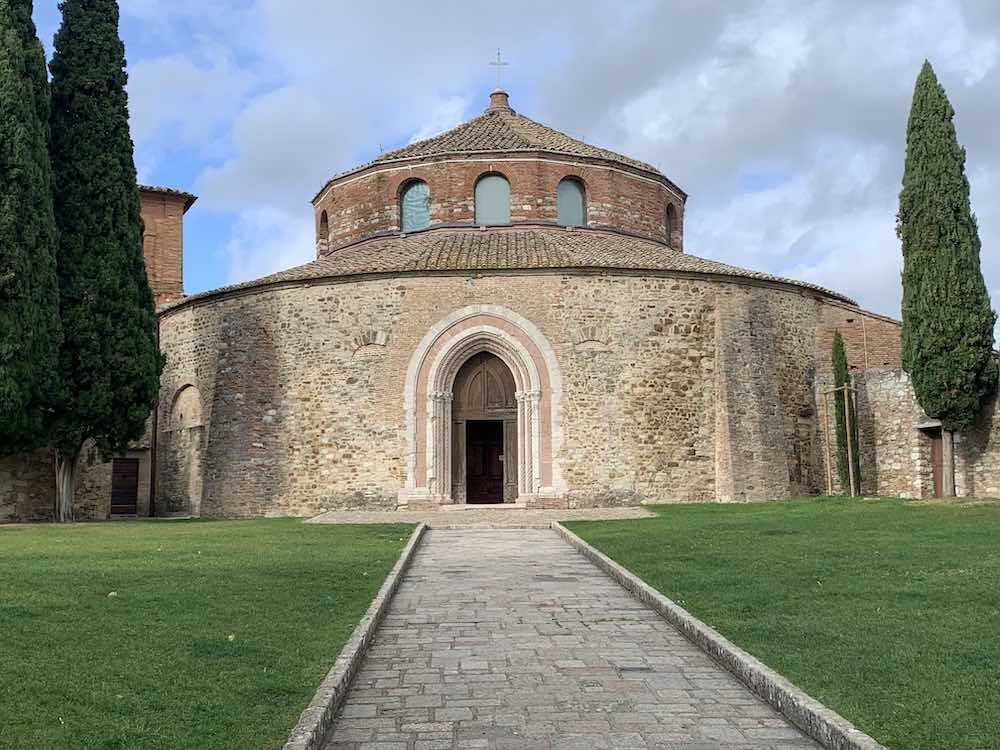
Florence, Tuscany Day Trips – 5 days
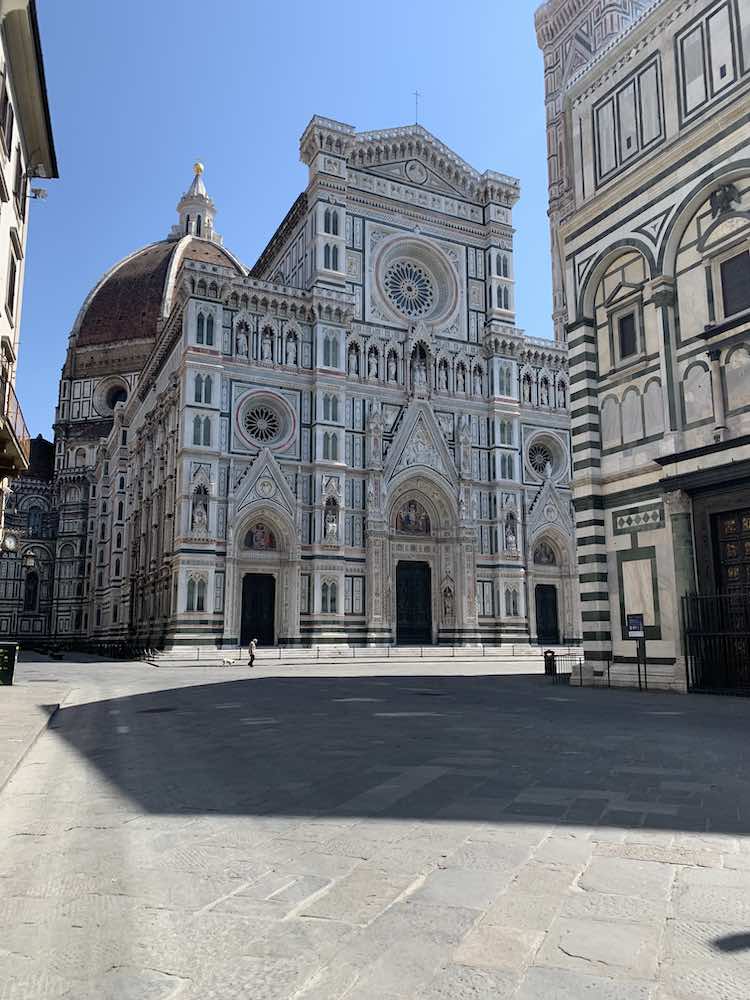
From Perugia, Florence is only two hours away by train and one of the highlights of one month in Italy. It is of the most beautiful cities in the world and the center of Renaissance art. Plus, there are a couple of great day trips from the city.
I lived in Florence during COVID and it was unique to be able to see all of the famous sights without crowds.
You won’t be able to see everything but absolute musts include Piazza del Duomo and the statue of David at Galleria dell’Accademia. Others are the incredible old bridge, Ponte Vecchio, Piazza della Signoria, Galleria degli Uffizi and Piazza della Repubblica.
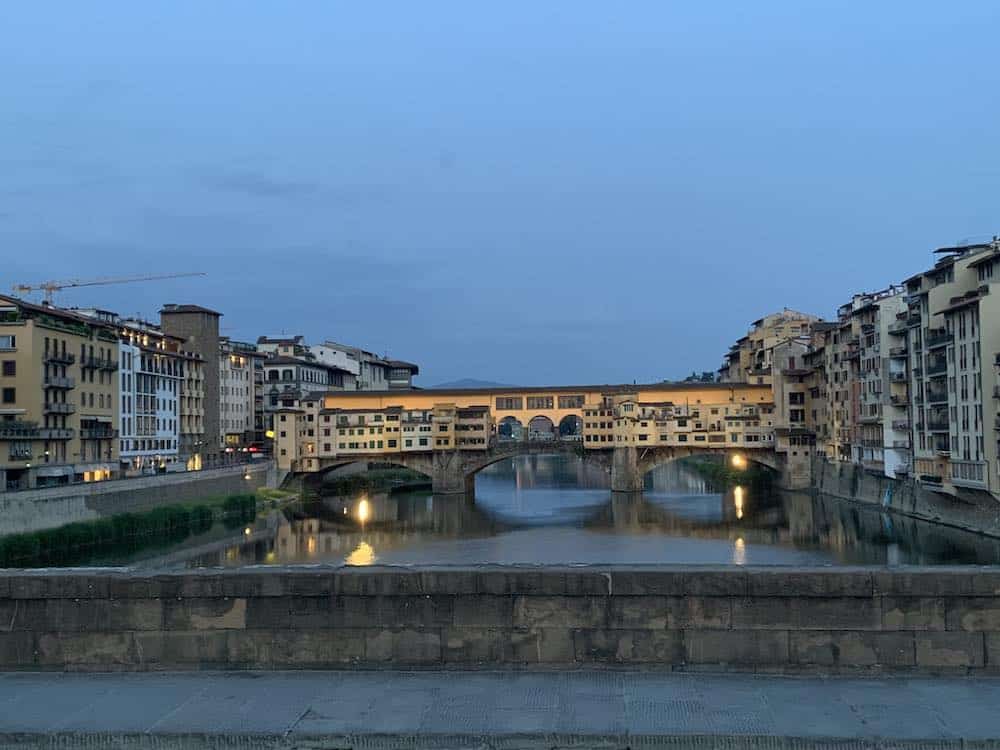
My favorite part of the city is further south across the Arno River, where there are less crowds. For the best free view of Florence, go up to Piazzale Michelangelo. Not far from there is the incredible Basilica di San Miniato al Monte.
Other activities on the south side of the river include the Torre del Belvedere, Bardini Gardens and Pitti Palace. Spend some time wandering around Florence’s cobblestone streets and taking in the architecture. Also, walking along either side of the Arno is always worth it.
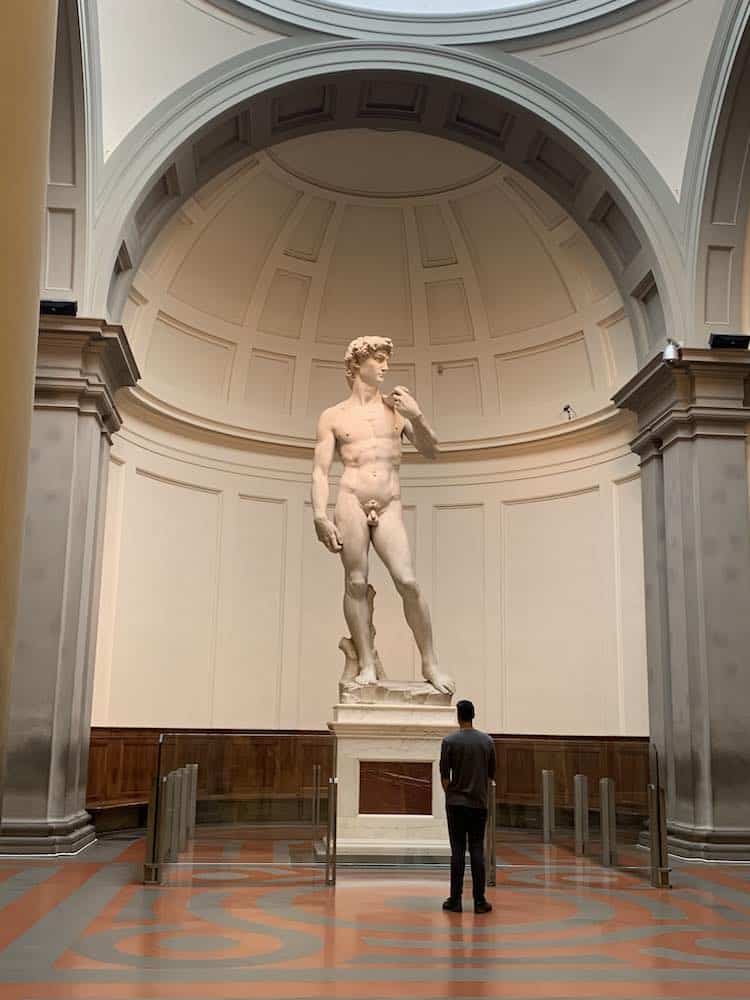
Florence’s schiacciate are famous and they are focaccia sandwiches often with meat, cheese and vegetables. All’Antico Vinaio has gone global but Come Dio Comanda and Sandwichic are two more local options to try schiacciata at. Florentine steak is another famous food from the city.
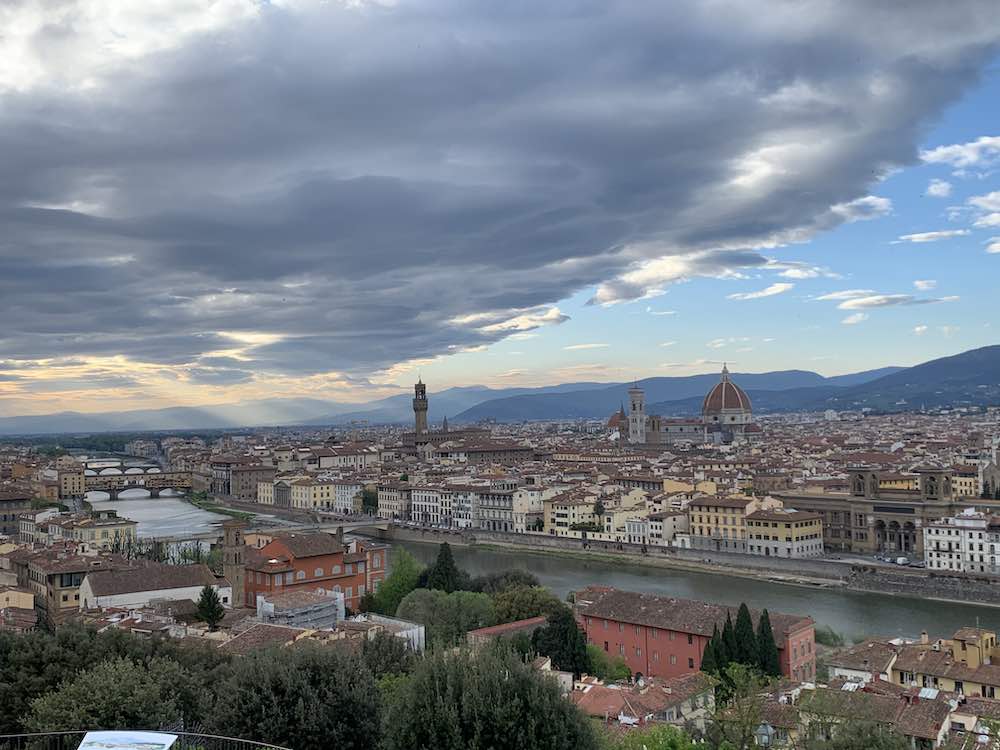
Potential Day Trips
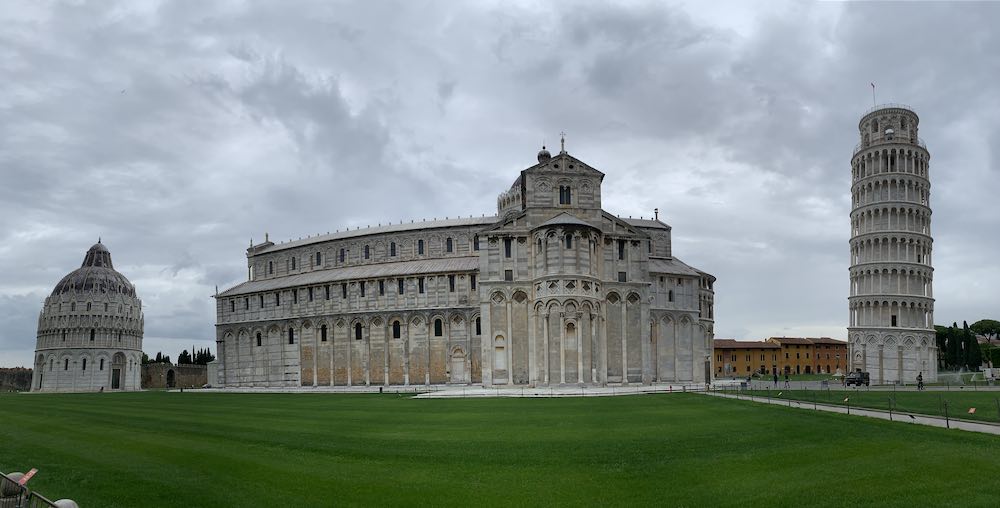
After you’ve seen some of Florence’s highlights take a day trip to Pisa, which is about 80 minutes away by train. Of course, it is famous for the Leaning Tower of Pisa. It’s an essential stop during one month in Italy even if it gets incredibly crowded. The small Chiesa di Santa Maria della Spina is also very charming.
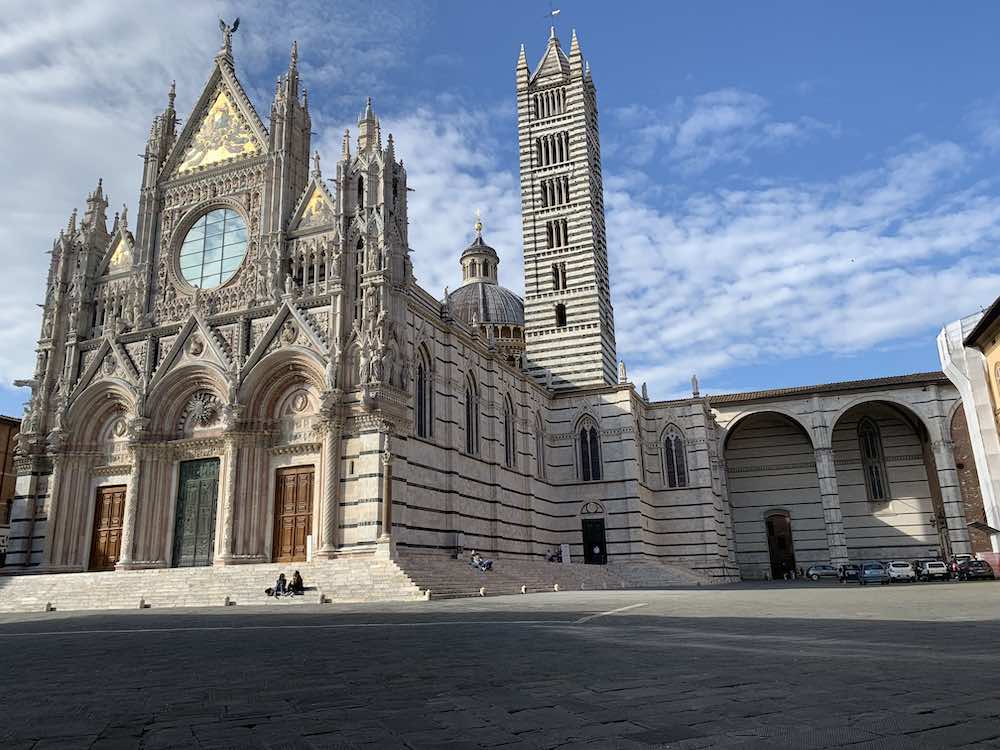
Siena is also 90 minutes away by train. It’s one of Italy’s most beautiful medieval cities and Siena Cathedral is unbelievable. Siena’s central square, Piazza del Campo, is a perfect place for people watching. Also make sure to check the Fontebranda, a 13th century fountain which is still in working order.
If you have more time, the walled city of Lucca is 80 minutes away from Florence and another good day trip. Check out the oval-shaped Piazza del Anfiteatro. Some typical Tuscan small towns include San Gimignano, Pienza, Montepulciano and Cortona.
Liguria – 4 days

Now we’re halfway into one month in Italy and it’s finally time to see some nature. From Florence, head two and a half hours away by train to Riomaggiore. It’s the southernmost town in Cinque Terre National Park, which is one of the most beautiful places in the country.
In Cinque Terre, you can choose to hike to all four of the other villages (Manarola, Corniglia, Vernazza and Monterosso al Mare). If you’re not feeling up to hiking, which has some breathtaking sea and village views, you can always take the train.
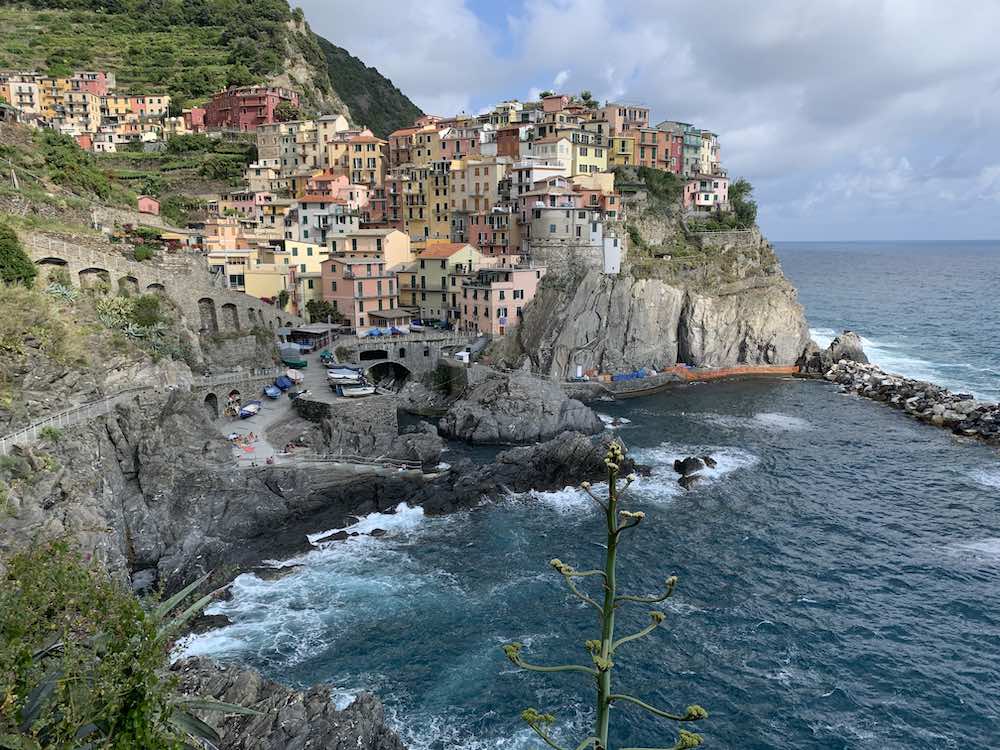
All of the villages in Cinque Terre have colorful houses and surrounded by dramatic hills. This National Park is located in Liguria, which is the region of Italy known for pesto. You’ll see plenty of farms along the hiking route growing all sorts of fresh food. Given a ton of tourists head here, not all restaurants are high quality.
To escape the crowds, stay in Corniglia, the village up hundreds of stairs from the train station. Bar Pan e Vin and Km.0 are two good restaurant options in the village. Nessun Dorma, in Manarola, has great appetizers and a great view.
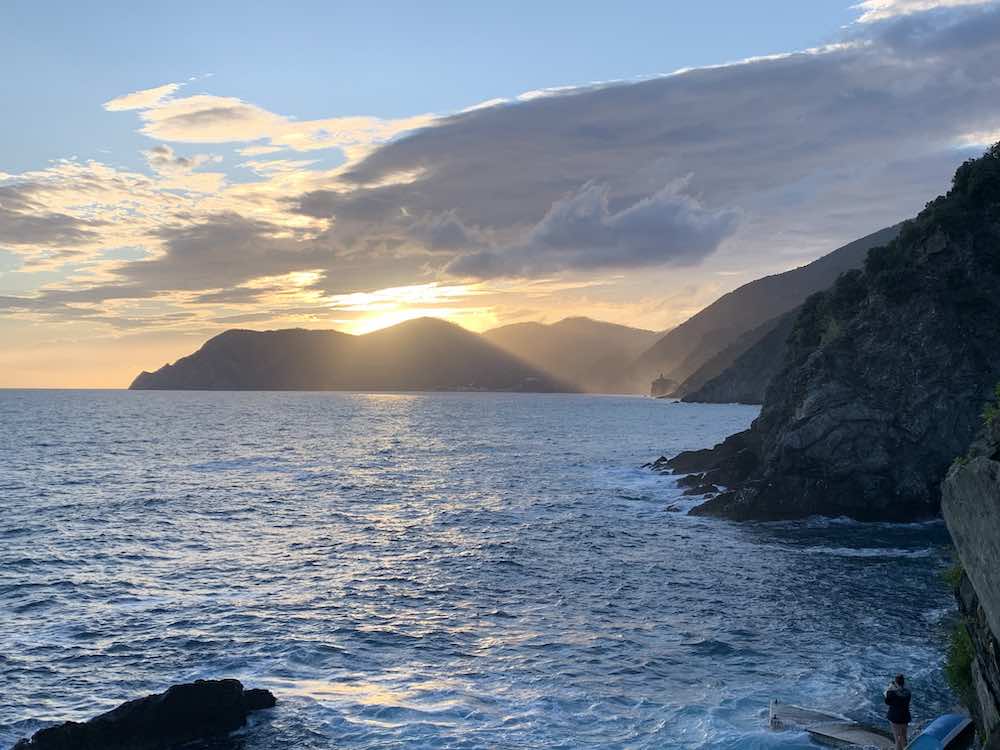
I’d recommend spending at least 2.5 days in Cinque Terre and then heading one hour north to Genoa. You can spend 1.5 days in the port city of Genoa, Liguria’s capital. That allows for enough time to sightsee and eat well.
Genoa has some of the best food in Italy and you have to try Cavour Modo21. It’s known for its reasonably priced pasta, seafood and pesto. The city center can be gritty in places but the narrow alleyways feel like stepping back in time. Don’t forget to walk on the upscale, UNESCO recognized Via Garibaldi to see a stark contrast.
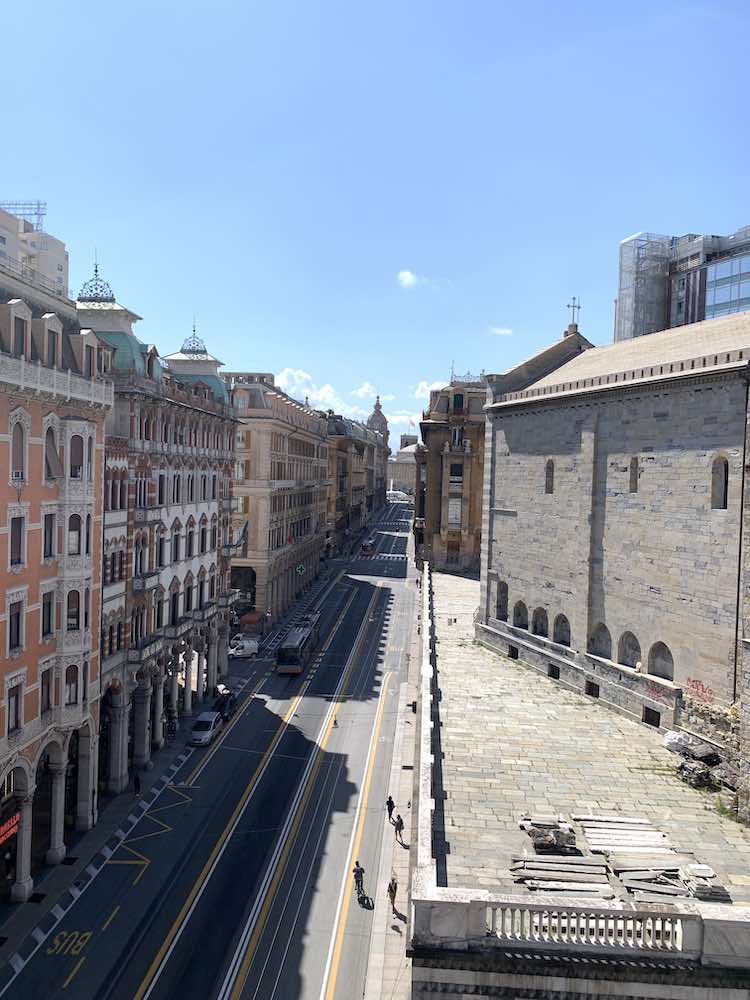
Turin – 2 days
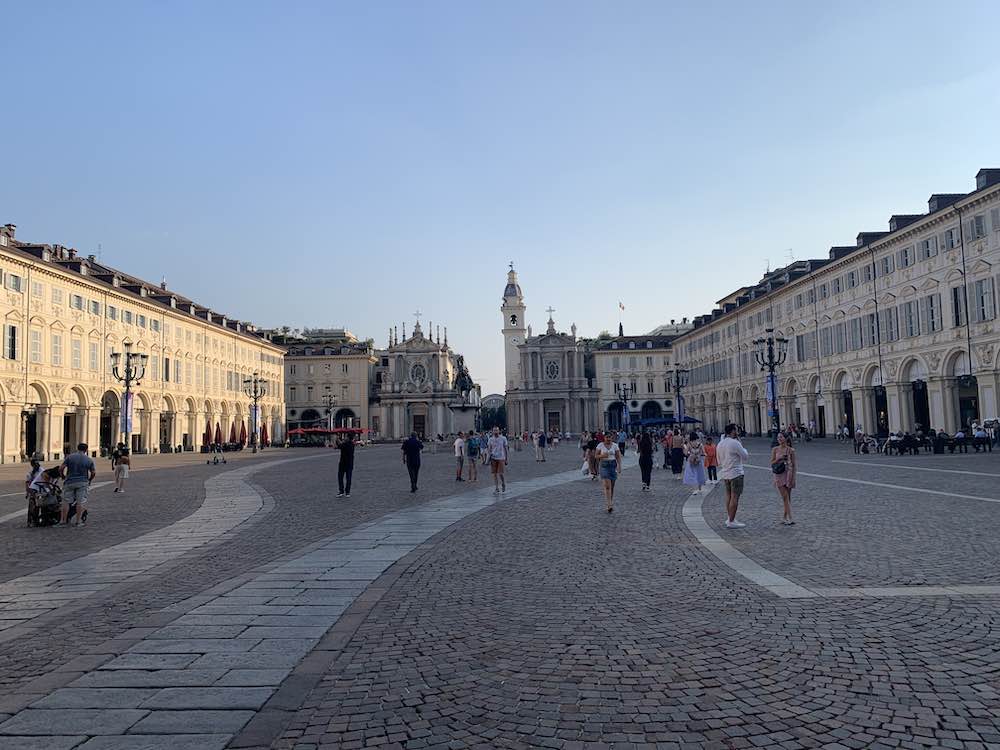
I spent a week in Turin in 2022 in the midst of a 100 degree heat wave but still managed to have a good time. The intercity train from Genoa takes about an hour and 45 minutes. You could see some of the major highlights in elegant Turin in two days.
The Mole Antonelliana is so iconic that the soccer derby between local teams Juventus and Torino is named after it. It houses the National Museum of Cinema. After checking it out, you can climb up the dome and see panoramic views of the city.
For the best view in the city, head across the Po River to the hilltop Church of Santa Maria del Monte dei Cappuccini. But first, don’t miss the other attractions in the city center.
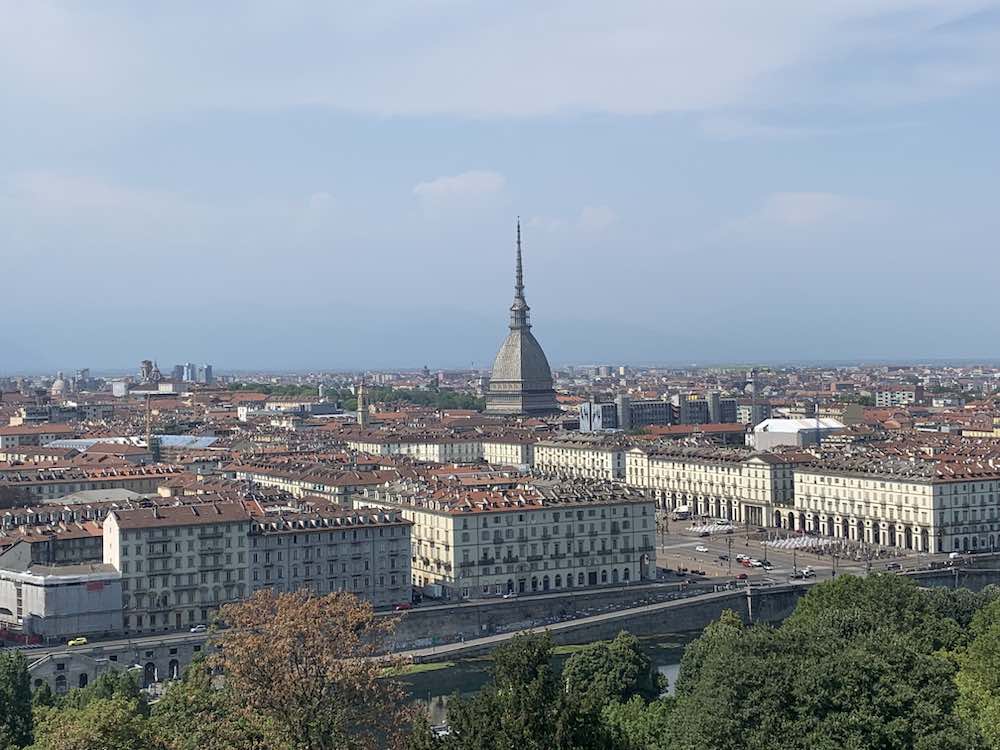
Turin is home to a bunch of former royal residences which are museums. I’d recommend the Royal Palace, which has gardens on its premises. The Palazzo Madama and Palazzo Carignano are also well worth a visit. The latter hosted the first Italian parliament. Plus, Turin has the most impressive Egypt Museum outside of Cairo itself.
Some pleasant streets to take a stroll on include Via Roma, Via Giuseppe Garibaldi and Via Carlo Alberto. Don’t miss the cathedral of San Giovanni Battista, home to the famed shroud of Turin. Porta Palatina is an impressive Roman-era artifact.
My favorite thing to do in Turin was walking around the former Fiat test track at the Pinacoteca Agnelli. If you take a long walk there from the center you’ll pass the trendy San Salvario neighborhood and can spend time at the beautiful Parco del Valentino.
Turin takes chocolate very seriously. Try Bicerin, which is espresso, chocolate and milk.
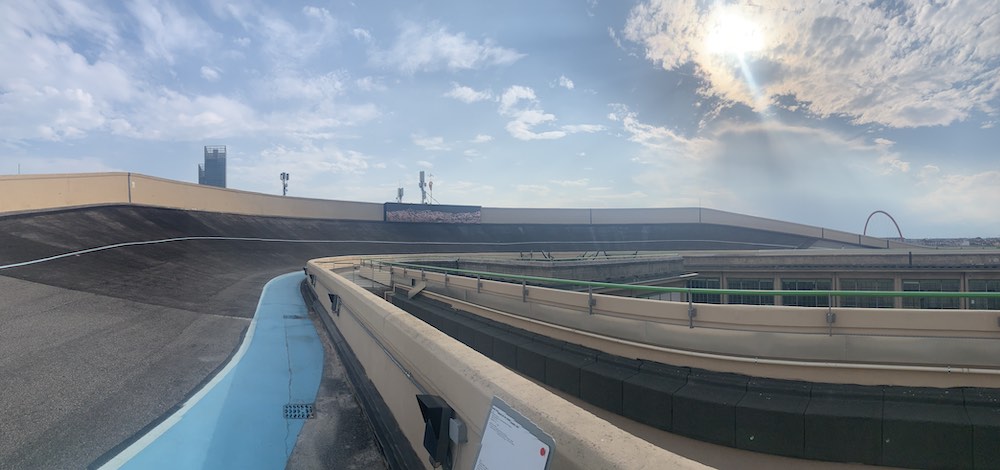
Milan – 1.5 days
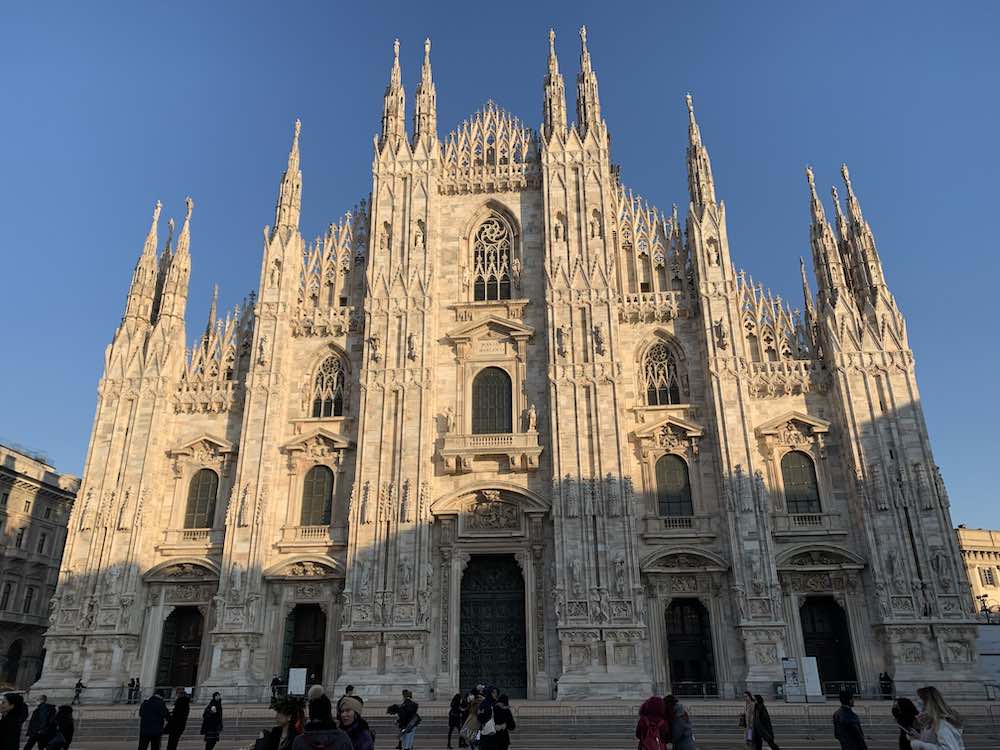
Milan is a much more modern city than the other ones on this list. A lot of people recommend skipping over it entirely but there are some cool things to do in the financial and fashion capital of the country. Plus, it is only an hour away from Turin on the train and a good stop during one month in Italy.
The Duomo di Milano is one of the largest churches in the world and one of Italy’s most iconic. Then, check out the Colonne di San Lorenzo, a set of Roman columns near other Roman ruins.
One of Milan’s coolest neighborhoods is Navigli, which is known for its canals and vintage shopping. Head back north to Basilica di Santa Maria delle Grazie to see Da Vinci’s world famous “Last Supper” painting.
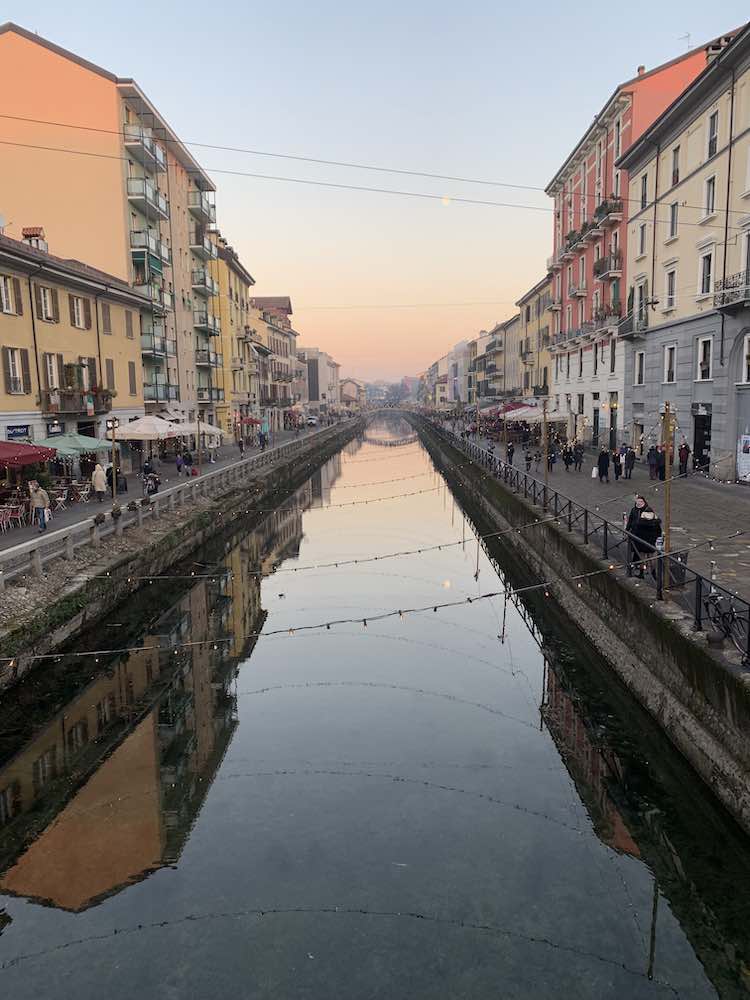
Parco Sempione is another essential stop in Milan. It is a big city oasis and has a fortress and the Arch of Peace.If you have more time, you could make a stop at Lake Como, which is just 40 minutes away by train.
Bologna – 1.5 days
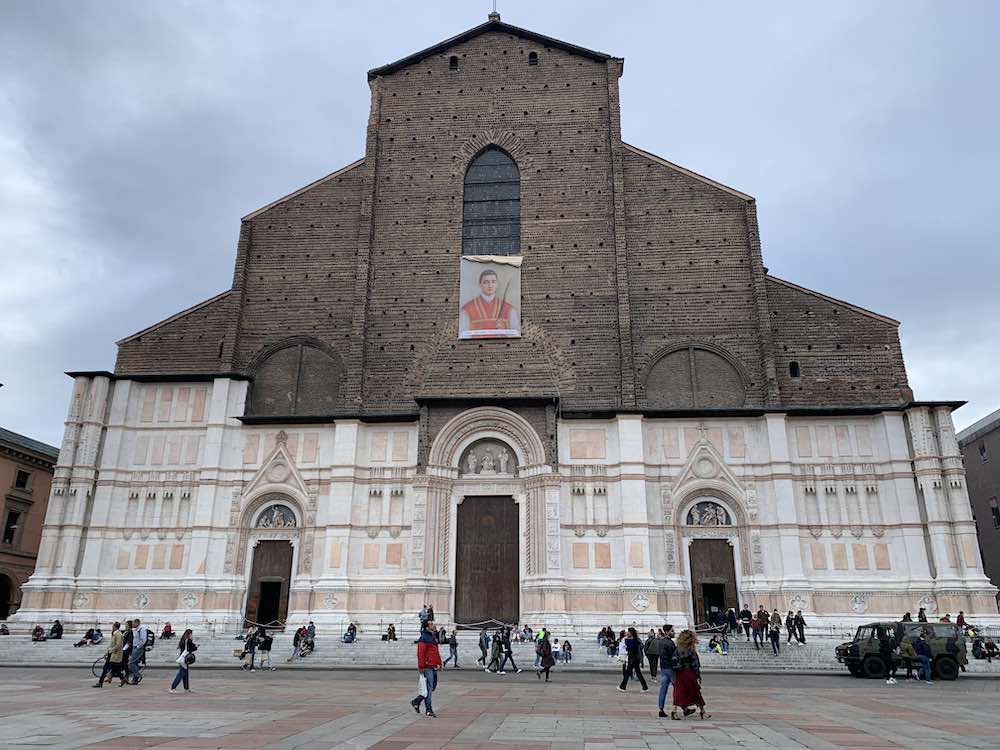
After a quick stop in Milan, head one hour southeast to Bologna. Bologna can claim it is one of Italy’s food capitals. It is known for foods like tagliatelle al ragu (Bolognese), tortellini, lasagna alla bolognese and mortadella. That makes it an essential stop during one month in Italy.
To start a quick trip to Bologna, head to the city’s main square Piazza Maggiore. There, you’ll find the Basilica of San Petronio, which is the sixth largest church in Europe. It is unique, in no small part, because it is unfinished. The exposed brick and marble make for an interesting look.
Neptune’s Fountain is close to the main square and worth a quick stop. Two of the buildings in the city that stand out the most are the Two Towers. Usually you can climb the Assinelli Tower but as of early 2025, it was under construction.

There are some amazing frescoes in the Archiginnasio Library and the Basilica of Santo Stefano is another must do. In reality, it is not just one church. There are seven churches to explore in the complex, the oldest of which is from the fifth century.
There’s also a window that unexpectedly opens up onto a canal on Via Piella, which I found interesting. If the weather’s bad, head to the indoor Mercato delle Erbe for local food and drinks. Osteria della Lanterna is a great local restaurant.
On the contrary, if the weather is nice, you could head for a long walk. Walk four kilometers from the center to the Sanctuary of Madonna di San Luca. The walk is completely covered by porticoes throughout and is a pilgrimage route.
Veneto Region – Verona, Venice – 7 days

After checking out Bologna for a bit, the fast train to Verona only takes a little under an hour. Verona is an excellent base for the last week of your month in Italy. It’s also one of the most beautiful cities in the country and was the setting of Shakespeare’s Romeo and Juliet.
The Arena of Verona is a big Roman amphitheater which is still used today for concerts and events. After admiring it, head to the city center. Piazza delle Erbe and Piazza dei Signori have plenty of impressive buildings, cafes and restaurants around them.
Then, the Scaliger Bridge and Pietra Bridge are both worth walking across the Adige River for. To see panoramic views of the city, walk across the Pietra and head to Castel San Pietro. Then head south and check out the gorgeous Giusti Garden.
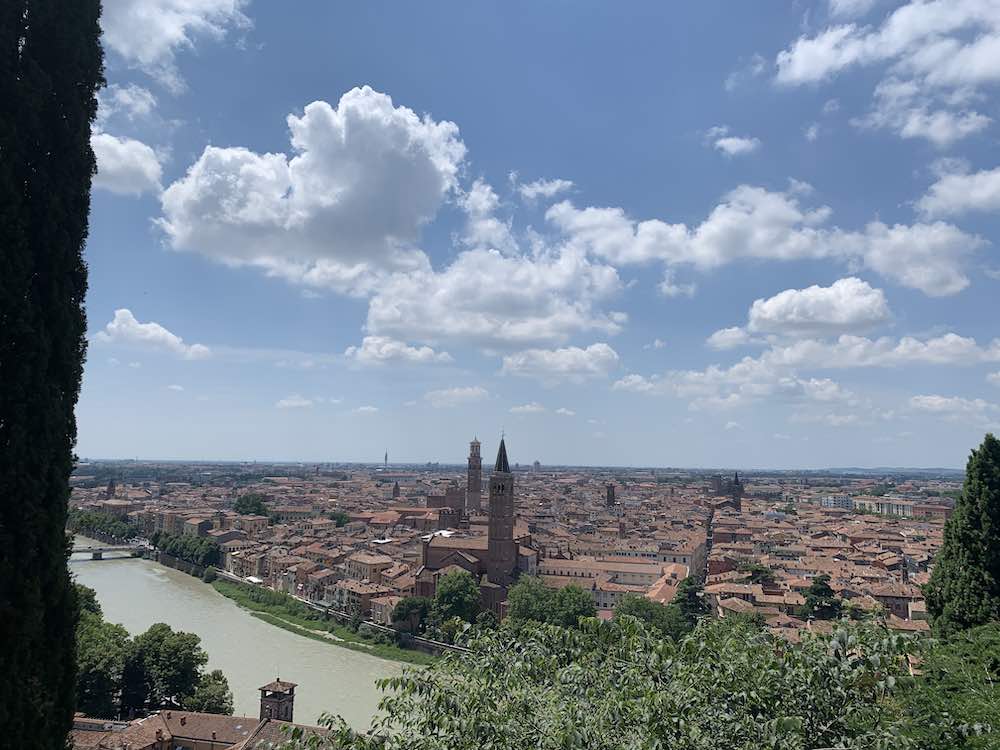
Three potential day trips from Verona are Lake Garda, Mantua and Padua. Lake Garda is Italy’s biggest lake. Although it’s actually in Lombardy, Mantua is only 45 minutes from Verona by regional train. It’s a city surrounded by three artificial lakes with cool sights. The Palazzo Ducale and Te Palace are worth the trip alone.
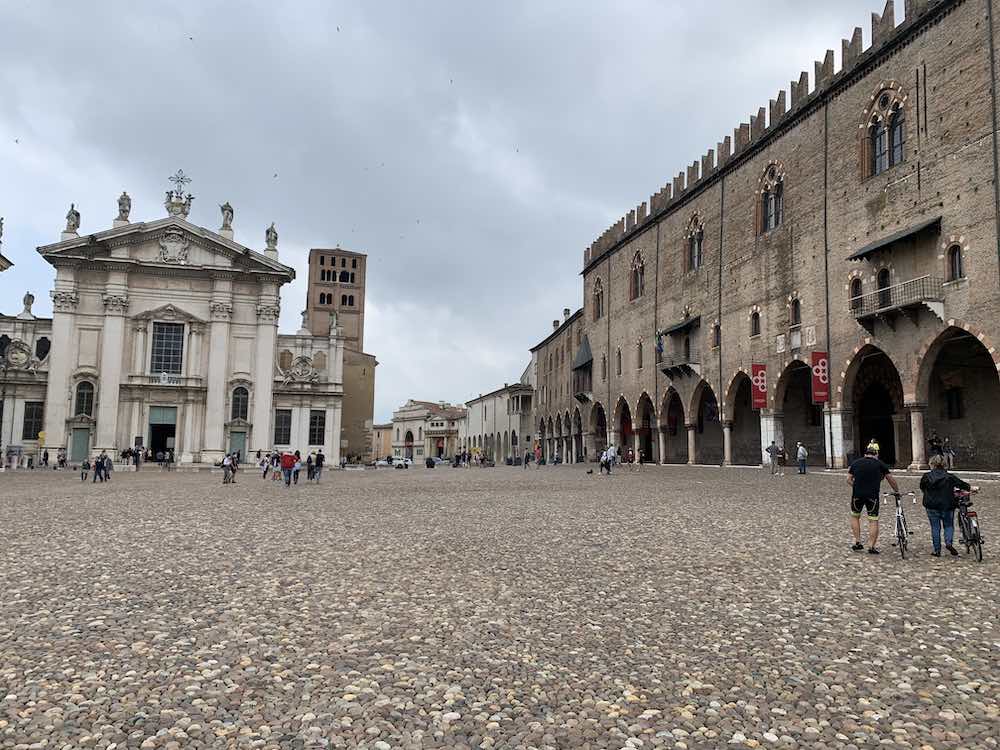
It’s also nice to walk along the lakefront promenade in the north part of the city. Mantua is also known for it’s squash, so you have to try tortelli alla zucca.
You can also take the train from Verona to university city Padua, which only takes about 55 minutes. From the train station head directly to the incredible Scrovegni Chapel. The Basilica of Saint Anthony cuts a fine figure on Padua’s skyline with multiple domes. Meanwhile, the Prato del Valle Park and sculpture garden is the perfect place for a picnic.
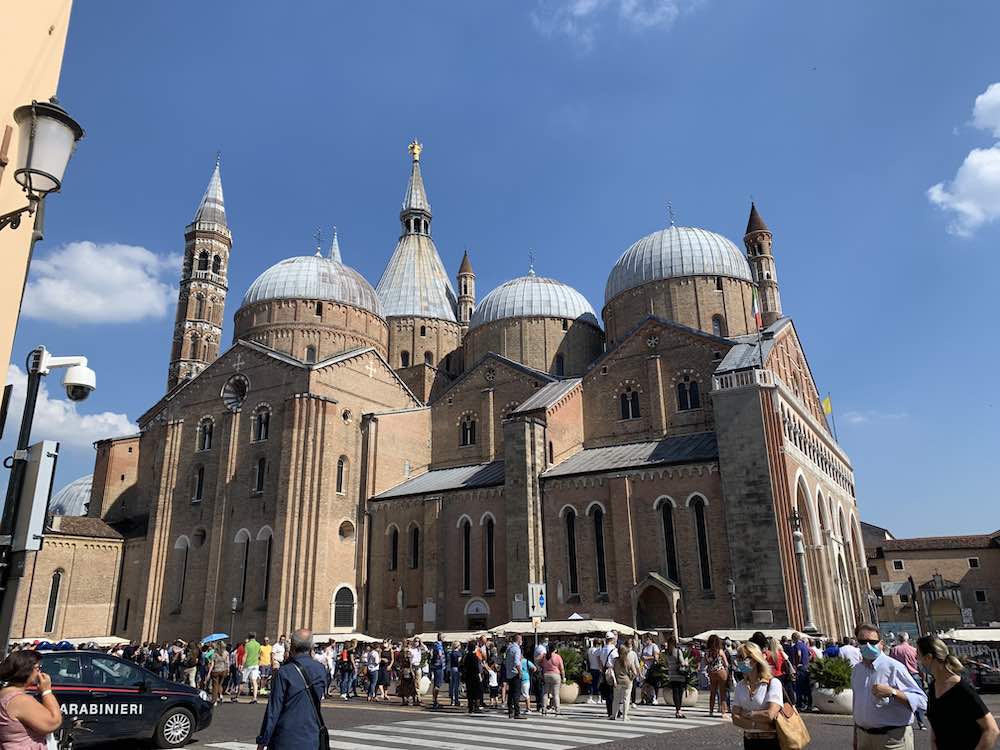
One Month in Italy: Venice
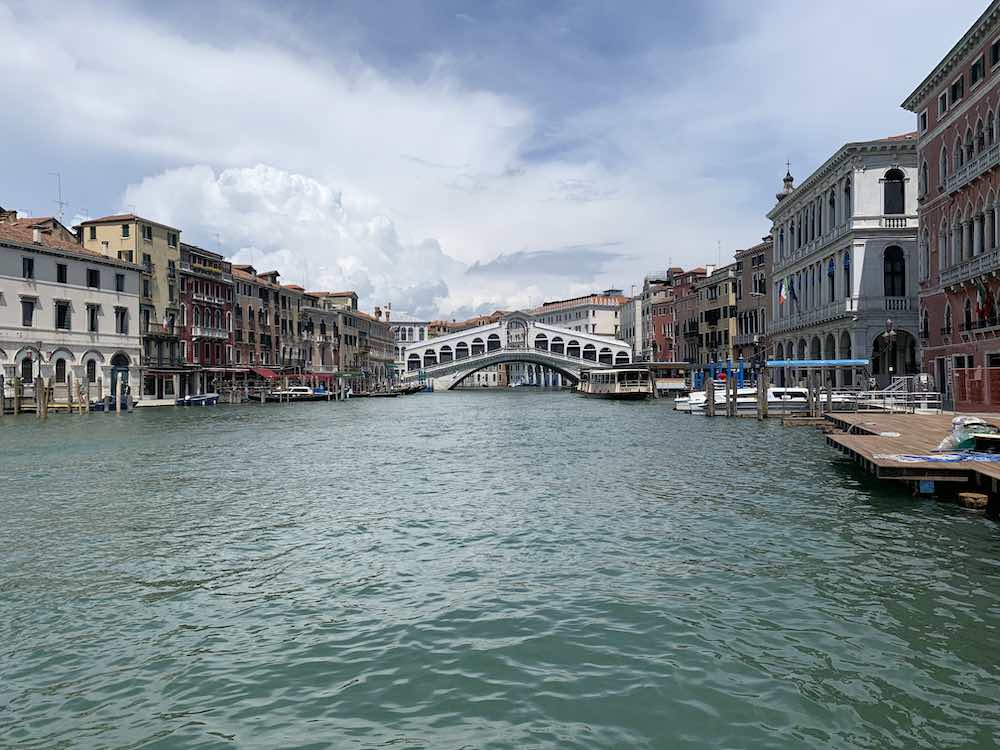
One month in Italy wouldn’t be complete without heading to Venice. Instead of staying there, you could take the train in from Verona for day trips, though. It’s one way to not have to constantly deal with crowds.
It only takes 70 minutes but you would have to pay the tourist tax if you’re visiting on select high season dates. Notably, you don’t have to pay during the Fall.
It seems somewhat hard to find good restaurants in Venice but I enjoyed the cicchetti at Osteria al Squero and the seafood pasta at Nevodi. Venice feels a bit Disneylike at times and has undoubtedly been changed by mass tourism.
Still, it’s one of the world’s most amazing cities and there are plenty of reasons to visit. It is a miracle that they were even able to build Venice, which is spread across multiple islands. Of course, Venice’s waterways are world famous and the most iconic bridge is Ponte di Rialto.
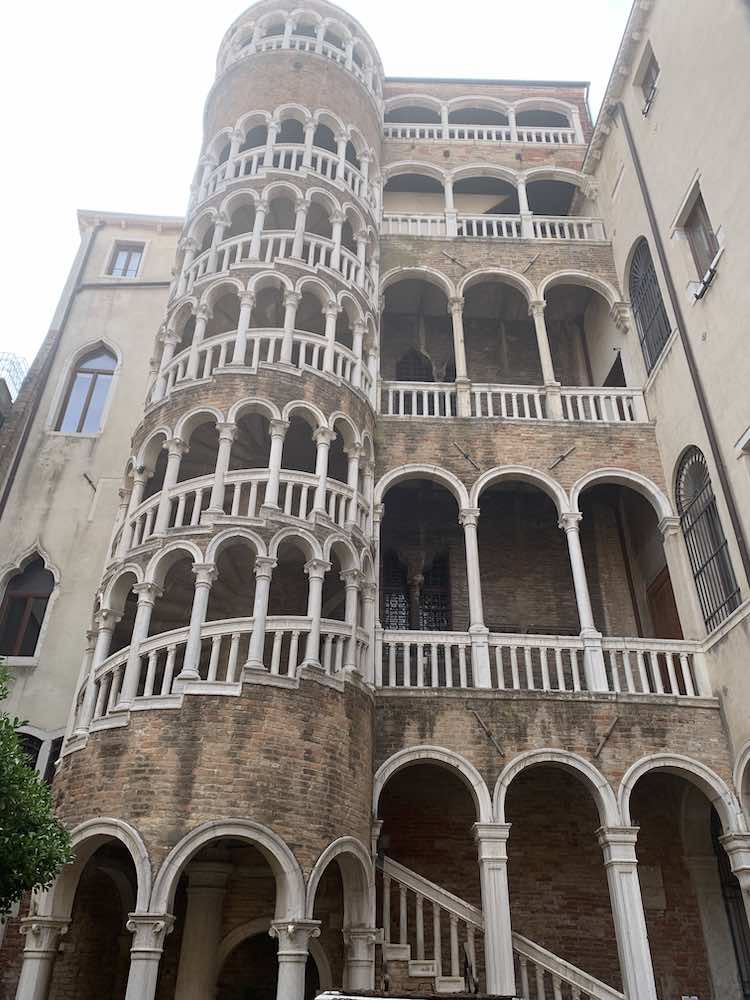
Island hopping on the ferries is a popular activity. However, I personally loved walking over bridges and getting lost in Venice’s narrow carless streets. One of the coolest buildings in Venice is the Palazzo Contarini del Bovolo. It has an incredible spiral staircase and was featured in Orson Welles’ Othello.
No visit would be complete without heading to Saint Mark’s Square. I am grateful I was able to visit during COVID with no crowds and take in all of its beauty at a slow pace. In a country full of incredible churches, Saint Mark’s Basilica still stands out.
The Galleria dell’Academia is very nice and not to be confused with the one in Florence. I’d also recommend heading to the church and square of Santi Giovanni e Paolo.
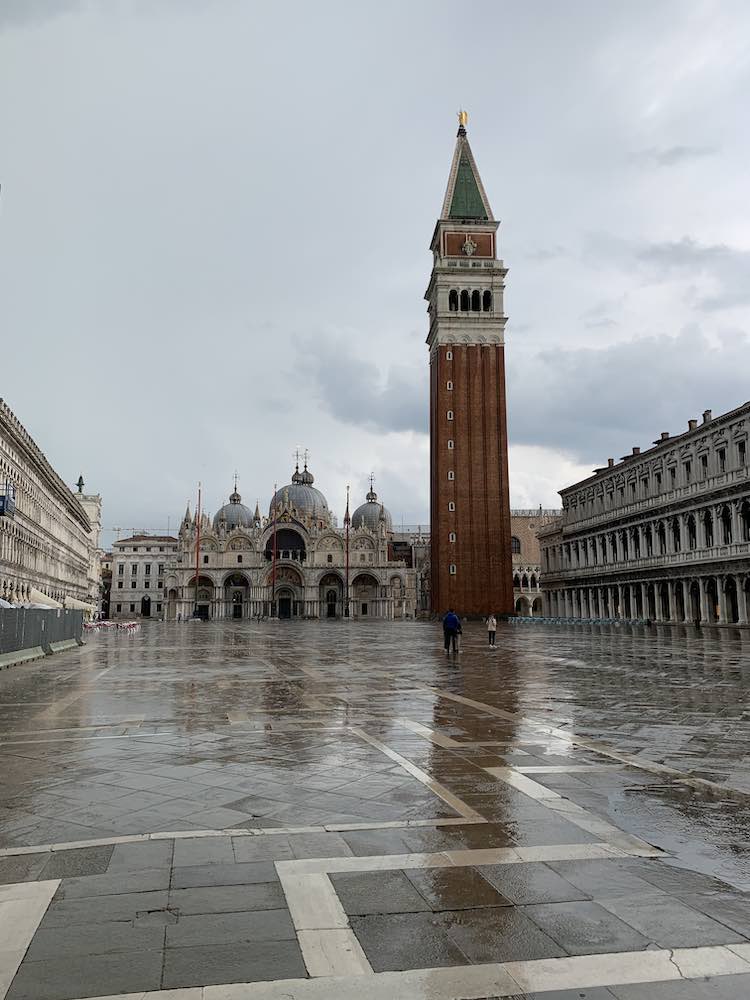
One Month in Italy: Other Options
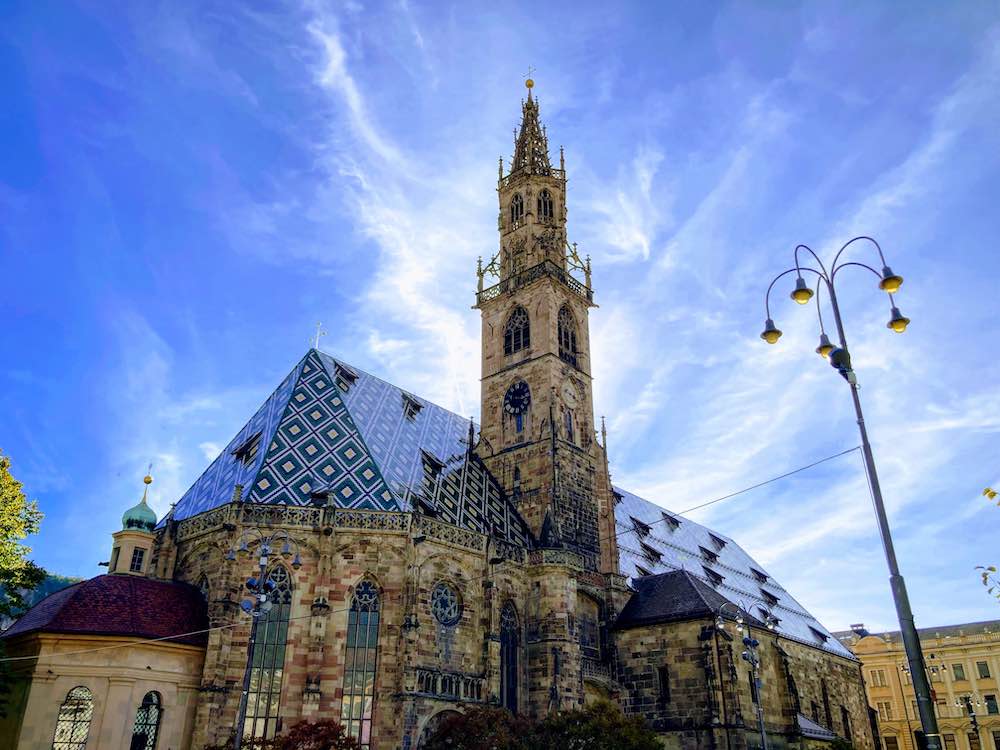
Of course, feel free to spend one month in Italy the way you see fit! This is primarily an itinerary for people who want to see as many highlights in one month as they can without feeling like they are going at a completely breakneck pace. Plus, it’s made with taking public transit in mind.
In reality, you could easily fill one month in Italy in one or a few regions alone. With a car, it becomes easier to really dive deep into specific regions. Also, options like Puglia, Calabria and the mountains will open up with a car.
However, there is a way to see the Dolomites by taking public transit but it’s best by car. If you have enough time you could add it on after Verona. From Verona, you can take the train to both Trento (70 mins) and Bolzano (2 hours 5 minutes).
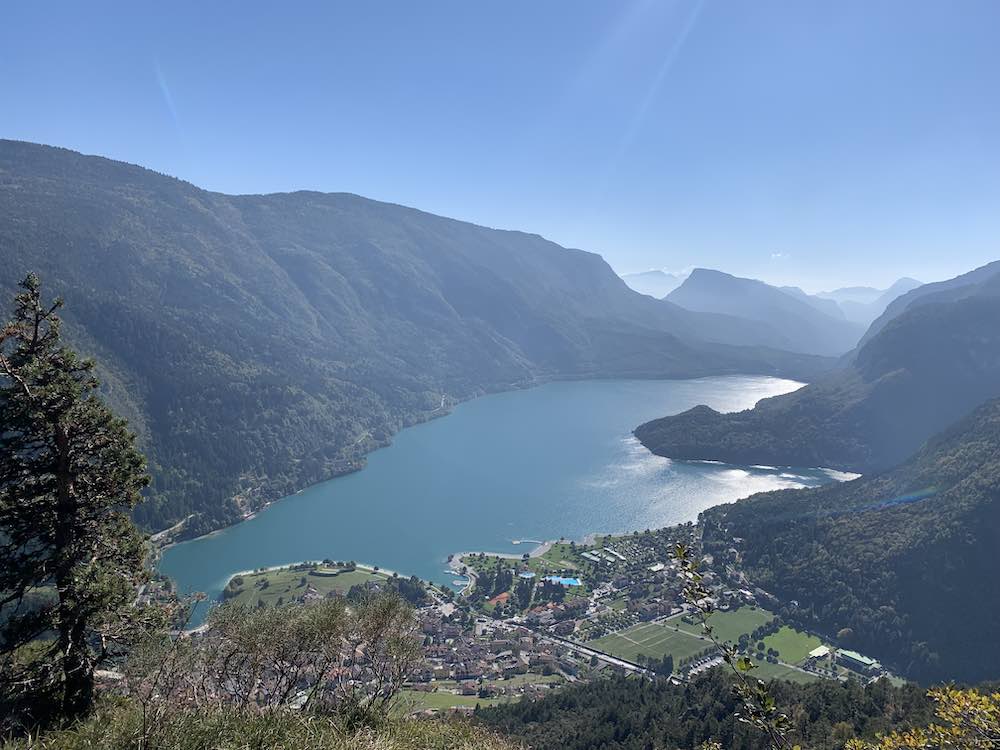
These are both pleasant gateway cities to the Dolomites. Plus, in South Tyrol, where Bolzano is, the majority of people speak German as their primary language.
From Trento, you can take a train to Mezzocorona and bus from there to Molveno, which is a beautiful lake town. There is a seasonal cable car there which goes up to the jaw dropping Parco Naturale Adamello Brenta.

From Bolzano, you can take a bus to Siusi, where there’s a cable car that goes up to the alps. Or, you can head to Santa Maddalena, the gateway to Puez Odle Nature Park. Santa Maddalena and Puez Odle are quite possibly the most beautiful places I’ve been to in Italy.

Regardless, you’ll have a great time however you decide to spend one month in Italy!
